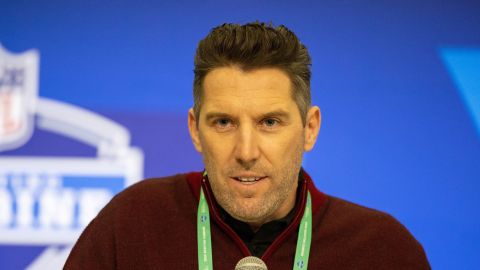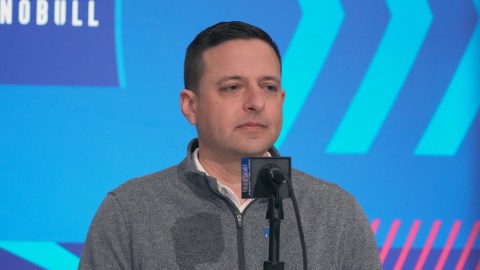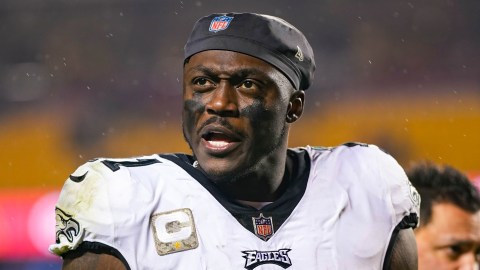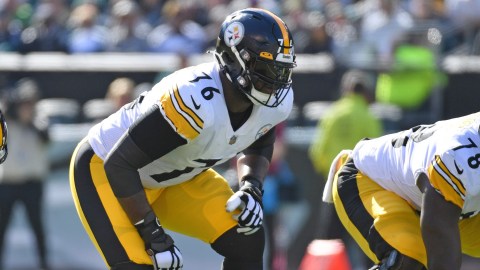 Dink and dunk it was not. Drift and drop may be more accurate.
Dink and dunk it was not. Drift and drop may be more accurate.
The Patriots exhibited the opposite of precision Thursday night against the Jets, making a game that would end underwater extremely sloppy before rain even fell. The final score was 13-10 New England, but it was surprising that even those points were scored. The teams totaled just 24 first downs (only nine for the Patriots), and neither team averaged more than 4.8 yards a pass.
New England was especially horrid on offense. The team that struggled to make connections in the first week of the season against the Bills was even worse Thursday, with Tom Brady and his receivers failing to get on the same page. Receivers often ran wrong routes, and when they ran the right ones, they often dropped passes.
The result — other than the win and the kind of experience that will remind the rookies exactly how much they need to work this week — was a poor stat line for Brady. The Hall of Fame-bound quarterback, who passed for more than 5,000 yards two seasons ago and was close again last year, totaled just 185 yards and a touchdown.
Even worse for Brady, though, was his completion percentage. The 19-for-39 night (48.7 percent) was his worst showing, percentage-wise, since 2009, and it set his season mark at 52.7 percent. In a league where accuracy increasingly portends how in sync a quarterback and his receivers are, the numbers told the story: The Patriots’ offense is pretty messed up.
Few people who watched New England’s struggles over the first couple of weeks need to be told that the team was off. But a look at why they were off and whether those reasons can be addressed can lend some perspective, especially as the Patriots face what should be a much tougher defensive foe this week. If the Bills and Jets can hold Brady to completing just one of every two throws, Darrelle Revis and the Tampa Bay Buccaneers could be a real challenge.
First, the main problem with the Patriots’ offense is obviously the receivers — both the lack of total receivers and the lack of experienced receivers. There was the offseason siphoning of Brady’s top targets from last year, and the injury bug has already swallowed Danny Amendola. The rookie wide receivers have showed up, but they’ve also been responsible for almost all the miscommunication and missed passes. Julian Edelman will capably take his licks, but he shouldn’t be holding this team together.
Something that has quickly become evident in the regular season is that it will take the Patriots’ young receivers a good amount of time to really learn the offense. Bill Belichick and Josh McDaniels are notoriously complicated when it comes to how they strategize moving the ball, and Brady is the perfect quarterback for them, making decisions and adjustments on the fly. But getting young wide receivers — and especially ones in their first year in the NFL — onto that program is going to be a challenge, no matter who’s involved.
The Patriots, who didn’t run their full-powered offense in the preseason, now have to get those receivers up to speed during go time. Brady’s completion percentage so far shows the complications of that — in the preseason, he went 7-for-8, 11-for-12 and 16-for-24 (77 percent overall) in his three appearances while running a simpler scheme. He was rarely on the field with the new receivers in the preseason, and he wasn’t the full Brady when he was. Now that everyone is getting more game experience together, growth can happen. The receivers will develop, but it will take time.
The other part of the receiver deficiency, and how Brady’s completion percentage reflects the Patriots’ current challenges, is who the Patriots have as their total corps this year. What Brady has at his disposal this season brings back memories of his early years under center, when the strength of the team was on defense and when the Patriots didn’t necessarily have great wide receivers. Brady will have to produce more magic this year to get results, and that means that, just as the receivers have to learn to work with him, he’ll have to adjust to their abilities, too.
Brady’s completion percentage through the years is fine proof of the fact that having better wide receivers is going to make a quarterback and an offense better. Brady’s completion mark hovered in the low 60 percent range early in his career (the high was his first season, when he completed 63.9 percent of his passes on a career-low 413 attempts). His best year ever — no surprise here — was 2007, the season the offense went crazy. He broke records and took the Patriots to the Super Bowl with a couple of wideouts named Randy Moss and Wes Welker.
Three of Brady’s last four years have had the highest complete percentages of his career (minus the 2007 season). They are also the years when he had the most stable receiving group he’s ever had, with veterans returning while rookie tight ends Rob Gronkowski and Aaron Hernandez were grafted in. Brady completed 65.7, 65.9 and 65.6 percent of his passes in 2009, 2010 and 2011, respectively, with the percentage only dropping last year when his attempts hit a career-high 637 for the year.
That number brings the discussion to the final point: the running game. While most of these numbers only corroborate what everyone knows already — that the rookie receivers are struggling, that the new members of the offense need to learn quickly and that Brady is obviously better when he has guys he can click with — the total attempts number is an area where the Patriots have always struggled, especially as Brady has become better. For all the power the Patriots have on offense, they can still be goaded into relying on Brady too much. His pass attempts inch up, and suddenly he’s throwing 52 passes a game (the number against Buffalo) even though the Patriots have young, capable ball carriers.
Whether the rookie receivers will come around, and Brady’s completion percentage — an insignificant number if not for how it backs up seeing-eye evidence that Brady and the offense are clicking — will get back to a normal level is worth looking at.
But perhaps the biggest question coming out of Thursday’s game is not why Brady completed just 19 passes, or why Aaron Dobson and Kenbrell Thompkins were dropping all sorts of balls. The question instead has to be: Why, on a rainy, miserable night, did Stevan Ridley rush for just 40 yards and the Patriots try to rush the ball just 24 times? Even if the running game isn’t incredibly effective, it’s still necessary to set up the pass or give the defense a different look. Over-reliance on Brady’s arm has led to the offense being out of whack in years past, and the offense certainly struggled Thursday night.
But maybe the Patriots know their personnel better than the average person watching that sloppy game. Maybe they know that the running backs will be able to carry the ball at any time, but the window is small to get the receivers ready.
Perhaps Brady and the Patriots know that the more incompletions and dropped passes they have now, the closer they’ll get to actual pulling this offense together, as messy as it can be. They’ll accept the rough games if it means the receivers take the steps they need to play well when it matters.
The receivers rounding into form, after all, could mean more chances to rush — or boost that completion percentage — down the road.



